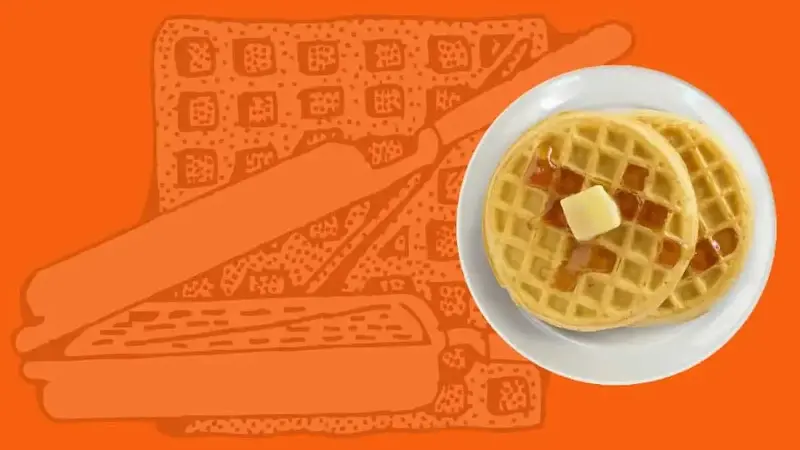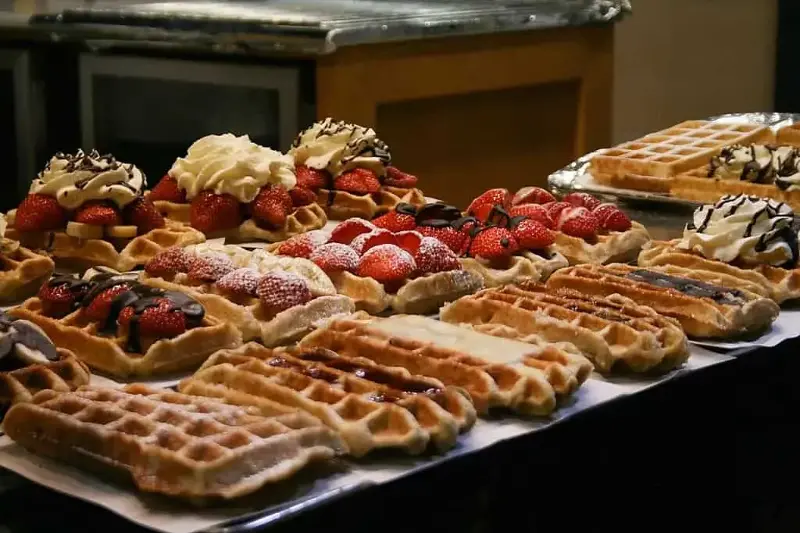
PICTURE a golden square, its deep pockets filled with syrup, its edges crisp but yielding — now imagine that same shape clutched in the hands of a girl with telekinetic powers. As Stranger Things returns with its fifth and final season, the Eggo waffle is suddenly everywhere again: a nostalgic prop, a meme, a shorthand for Eleven herself. It’s a reminder that waffles aren’t just food; they’re an image so deeply imprinted in pop culture that a single grid can summon both comfort and cult fandom. Their geometry is instantly recognisable — a pattern that photographs beautifully, stacks neatly, and slips effortlessly into the language of memory and design. But how did this tidy grid travel from medieval cast irons to Netflix mythmaking? And what makes a humble griddle cake so visually powerful that it can anchor everything from breakfast rituals to blockbuster storytelling? This is the tale of the waffle’s shape — a journey through history, semiotics, nostalgia, and the peculiar magic of a perfect square.
Origins in Iron and Imprint
The waffle’s familiar grid owes its lineage to medieval Europe. Early waffle irons — or rather, wafer presses — weren’t just tools; they were art. In the Middle Ages, these irons were used to make “oublies” (a kind of wafer), often for ecclesiastical use, and bore religious iconography like crosses or biblical scenes.
As these wafers evolved, craftsmen experimented with more ornate designs — heraldry, animals, landscapes — giving early waffles an imprinting heritage. By the 15th century, the tools had changed: irons became rectangular, and grids grew deeper. That grid was not purely decorative. As the recipe evolved — from thin wafers into thicker, leavened batter — the design helped cook the cake evenly and create pockets to hold toppings.


Innovation, Patent, and Modern Machines
Centuries later, waffle irons got a serious upgrade. In 1869, Cornelius Swartwout patented a hinged, stove-top iron that made flipping safer. Before that, cooks risked burning themselves over open fire while turning heavy plates. His design introduced a handle and a mechanism to open the iron safely — a small but critical innovation in making waffles more accessible.
Electric waffle irons followed in the early 20th century. These machines made waffle-making far more convenient, and standardised the deep grid that we now associate with the “classic” waffle. As the grid deepened, it became a functional and aesthetic feature — perfect for holding syrup, fruit, or anything you want to pile on.
Why the Grid Matters: Function Meets Symbolism
There’s more to that checkered pattern than meets the eye. From a functional perspective, the grid increases surface area: more ridges, more pockets mean more syrup, more texture, and more crispiness.
But beyond that, the grid has symbolic power.
Design theorists note that grid systems are among the most legible and repeatable visual structures — our brains parse them easily, our eyes recognise them in an instant, and they give rhythm to what we see. Waffles, in that sense, are micro-grids: a self-contained design unit that promises both visual appeal and sensory consistency.
Semiotically, the waffle becomes a signifier. It’s not just food; it’s a coded message — of childhood, of comfort, of brunch rituals. Its form triggers familiar associations, making it ripe for cultural storytelling.


Pop Culture & Nostalgia: From Eleven to Instagram
The waffle’s semiotic power became particularly visible with the Netflix series Stranger Things. The show’s association of Eleven with Eggo waffles — and the pop-culture campaigns that followed — turned a frozen breakfast item into a nostalgic touchpoint of the 1980s. By leaning into that connection, the brand tapped into the emotional and visual weight of the waffle’s grid.
ALSO READ | Upside Down & Beyond: A Complete Retrospective Of Stranger Things (So Far)
That same emotional resonance fuels its viral, brunch-culture appeal. The waffle is a social media darling: grid shapes photograph beautifully, toppings sit in its pockets like little still lives, and the pattern helps organise visual chaos into something orderly and appealing. As food writers have observed, some foods “work” on Instagram precisely because of their geometry — their capacity to be seen, understood, and replicated.
Reinvention and Hybrid Forms
The grid has also proven flexible. Chefs and food entrepreneurs have pushed the waffle into new shapes — heart waffles, bubble waffles, croffles, even savoury versions — but they almost always keep something of the grid or a derivative of it. The aesthetic remains familiar even when the form shifts, proving how deeply the geometry is embedded in the waffle’s identity.
These iterations reflect how the waffle can carry different cultural meanings. Whether it's a brunch-café creation or a street-food hybrid, the grid acts as a visual anchor, a reminder of tradition even as its context changes.


The Waffle as a Design & Cultural Symbol
Why has this simple grid become such a strong cultural icon? Because it’s more than food — it’s design, history, and collective memory. The waffle’s geometry is a bridge: between medieval ritual and modern leisure, between functional cooking and visual storytelling. In a world where social media prizes instantly legible images, the waffle’s grid is ecosystem-ready, ready to be photographed, shared, and reinterpreted.
That grid is inherently comfortable. It’s structured yet playful; familiar yet capable of variation. And in an age obsessed with nostalgia, ritual, and visual clarity, it’s no surprise that the waffle sits at the intersection of all three.
